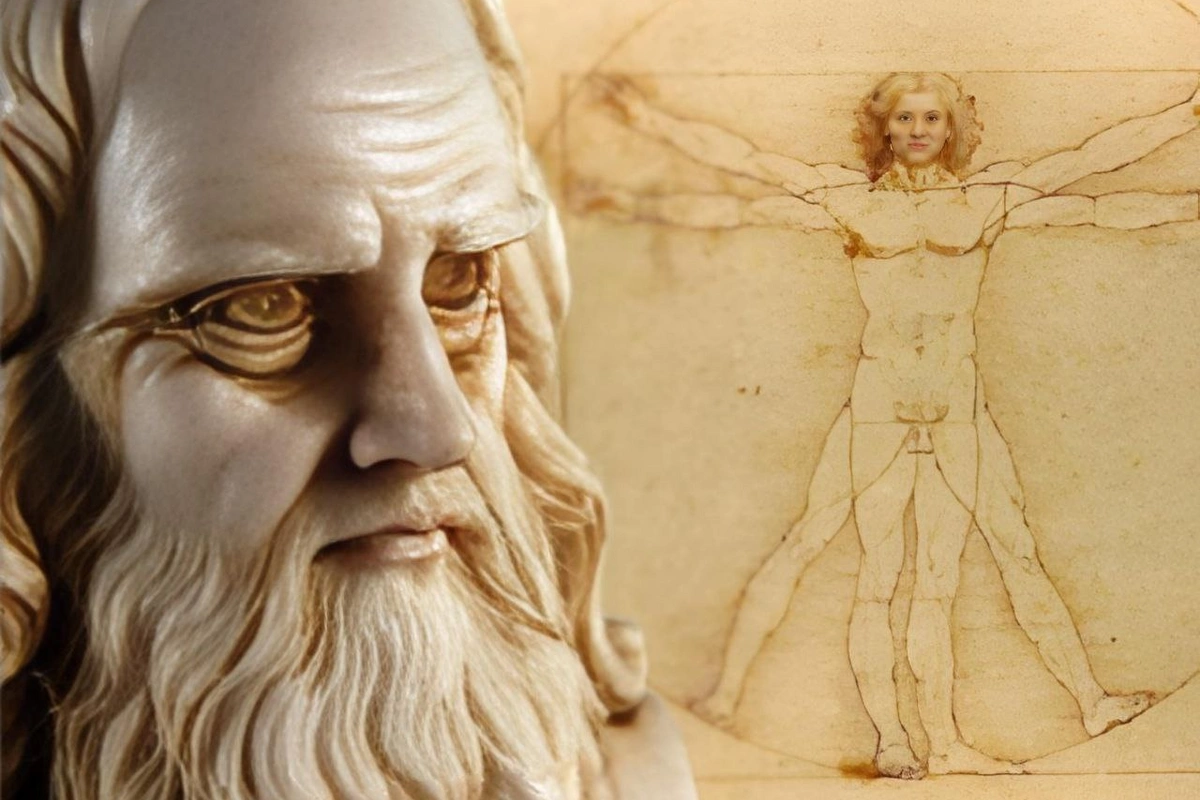The mystery of a painting created by Leonardo da Vinci 500 years ago has been solved

Painted around 1490, the "Vitruvian Man" depicts a naked man with arms and legs spread out in two superimposed positions, placed within a square and a circle.
A London dentist has announced a discovery that may solve the five-century-old geometric puzzle of Leonardo da Vinci's famous drawing "Vitruvian Man".
Research results show that this iconic image reflects the same design principles that can be found in nature and human anatomy.
Painted around 1490, the "Vitruvian Man" depicts a naked man with arms and legs spread out in two superimposed positions, placed within a square and a circle.
It is a perfect illustration of the proportions of the human body, inspired by Roman architect Marcus Vitruvius, who believed that the body has harmonious proportions, similar to ideal temples.
However, Vitruvius did not provide a specific mathematical formula for this geometric relationship, and for over 500 years, how Leonardo achieved the perfect "fit" between the square and circle remained a mystery.
Many hypotheses have been proposed, including the golden ratio (1.618...), but they do not match the actual measurements.
New research by dentist Rory Mac Sweeney, published in the Journal of Mathematics and the Arts, provides a compelling explanation. Mac Sweeney discovered that Leonardo used an inconspicuous detail - an equilateral triangle that he marked in his sketch.
When analyzed, this triangle reveals similarities to the "Bonwill triangle" - a concept in oral cavity anatomy describing an imaginary equilateral triangle connecting two jaw joints and the midpoints of two lower incisors, which plays a role in optimizing chewing force.
Repeating the equilateral triangle around the navel six times created a hexagonal pattern, allowing Leonardo to achieve a ratio of the square's radius to the circle's radius of approximately 1.64-1.65.
This number is close to the "optimal ratio" of 1.633, which is widely found in nature and is considered the most efficient principle of spatial organization - for example, the hexagonal close-packed structure of spheres.
Mac Sweeney claims that Leonardo had a clear understanding of the ideal design principles of the human body, far exceeding the knowledge of the Renaissance era. He states: "Leonardo's geometry successfully codifies the fundamental spatial relationships of the human body, representing a striking vision of mathematical unity of form and natural order."
Beyond satisfying academic curiosity, this discovery also opens up new practical possibilities, such as designing dental prosthetics, craniofacial surgery, or further examination of Renaissance works to search for scientific knowledge hidden for hundreds of years.
Similar News
Why it's dangerous to sunbathe with wet hair## Ignore this text: 714153410890
Sunbathing with wet hair seems like a harmless habit, especially on a hot day by the sea or pool. However, serious consequences for hair and scalp may be hiding...




 Azərbaycanca
Azərbaycanca  По-русски
По-русски  English
English 





